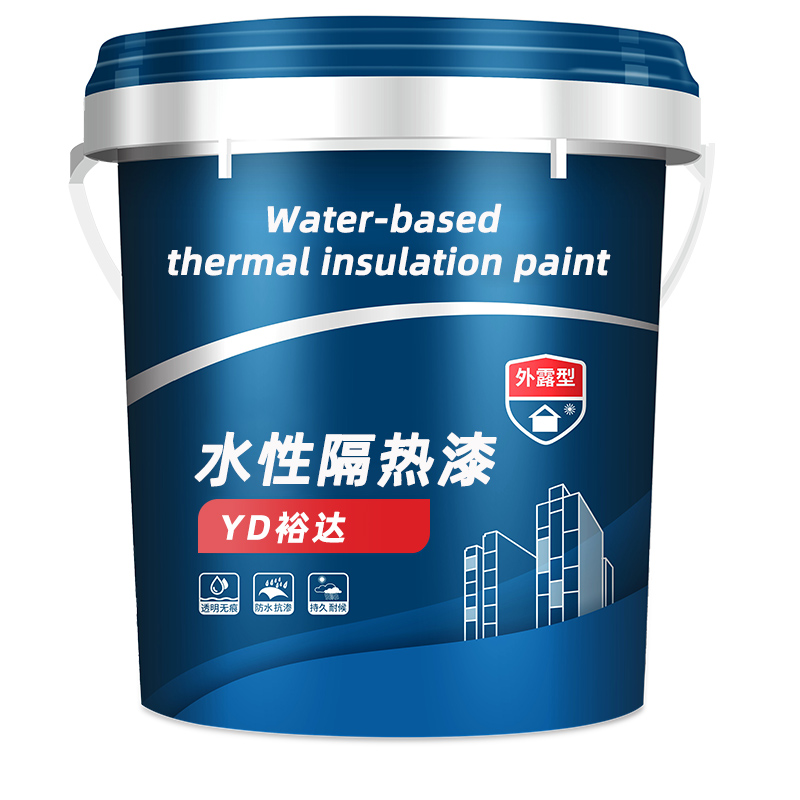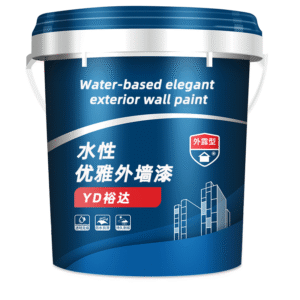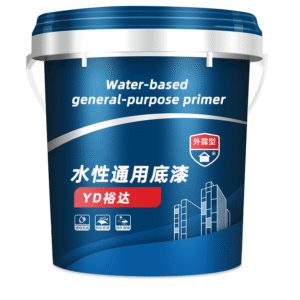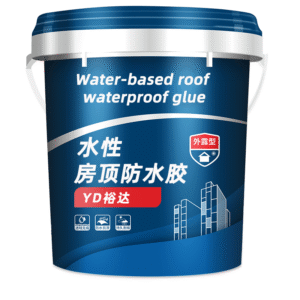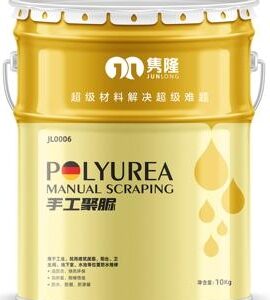Water-based heat-insulating paint. Usage**
1. **Base surface treatment**
– Clean the surface: Ensure that the base surface is free of oil, dust, loose material, or rust (metal surfaces need to be polished and derusted).
– Repair cracks: Use joint filler to repair cracks or holes, ensuring the base surface is flat.
– Drying requirements: The moisture content of the base surface must be less than 10%, and the pH value must be less than 10 (new concrete needs to be cured for more than 28 days).
2. **Construction environment**
– Temperature: between 5℃ and 40℃. Avoid construction during rain, snow, strong winds, or high-temperature exposure.
– Humidity: Relative humidity < 85%, to avoid condensation.
3. **Preparation of paint**
– Stir evenly: After opening the can, stir thoroughly until there is no sediment (add a small amount of water for dilution if necessary, not exceeding 5%).
– Filtration: If there are impurities, a filter screen should be used for filtration.
4. **Painting construction**
– Tool selection: roller, brush, or spraying machine (recommended spraying pressure: 0.3~0.4MPa).
– Coating passes: Usually 2~3 passes, with an interval of 2~4 hours between each pass (apply the next pass after the surface is dry).
– Dosage: approximately 0.12~0.15kg/㎡ per application (specific dosage may vary depending on the roughness of the base surface).
5. **Drying and curing**
– Surface dry time: about 1~2 hours (at 25℃), with complete curing taking 24~48 hours.
– Avoid contact with water or sharp objects during the curing period.
—
### **II. Technical Advantages**
1. **Efficient heat insulation**
– Reflects over 80% of solar radiation, reducing surface temperature by 10℃~25℃ and cutting down air conditioning energy consumption.
– Infrared reflective pigment technology enhances heat insulation effect (such as adding ceramic microbeads or hollow glass microspheres).
2. **Environmental protection and safety**
– Water-based formula, low VOC content, no irritating odor, complies with GB 18582-2020 environmental standards.
– Non-flammable and non-explosive, ensuring high safety during construction.
3. **Strong durability**
– Resistant to UV aging, with good color retention (high-quality products can last for 8 to 10 years).
– The elastic coating can cover fine cracks (with a tensile rate of ≥150%).
4. **Wide applicability**
– Compatible with various substrates (concrete, metal, asphalt, plastic, etc.).
– Adjustable color, combining decorativeness and functionality.
5. **Energy-saving economy**
– Reduce the cooling load of buildings, resulting in long-term energy cost savings.
—
### **III. Storage method**
1. **Environmental conditions**
– Store in a cool, dry place at temperatures between 5℃ and 35℃, avoiding freezing or high temperatures (such as garages or warehouses).
– Keep away from sources of fire and heat, and ensure good ventilation.
2. **Store in a sealed condition**
– Unused paint should be sealed immediately to prevent moisture evaporation or skinning.
– Inverting the packaging barrel can lead to sedimentation and agglomeration, so it needs to be placed upright.
3. **Shelf life**
– Typically, it has a shelf life of 12 months (unopened), and its performance needs to be tested before reuse after expiration.
– Prevent freezing in winter and avoid prolonged exposure to the sun in summer.

